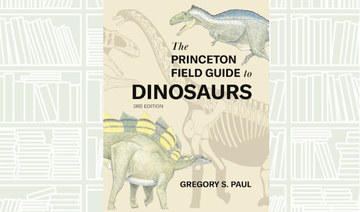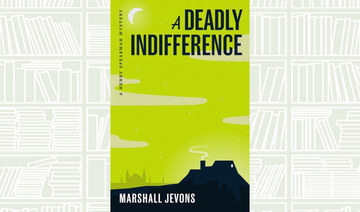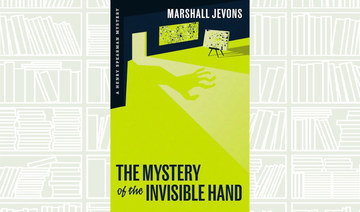It takes an expert to measure Broadway’s influence on Hollywood and vice versa, but American author Ethan Mordden has the knowledge and inimitable wit to do so. In “When Broadway Went to Hollywood,” Mordden takes us behind the scenes of the great Hollywood musicals we have loved for years and discusses the impact of Broadway musicals on the movie industry.
Broadway is the theatrical district in New York City that is well-known for being the American capital of musical theater and in this book, readers gain insight into how the influx of immigrants shaped this thriving creative hub.
During the 19th century, German and Scandinavian immigrants who entered the US moved to the Midwest where a large portion became farmers. The Irish, Italian and Jewish newcomers preferred to settle in the cities of the Northeast and many moved into the entertainment business, according to the book. In the 1920s, black talent also joined in to create a multi-cultural melting pot.
It was “The Jazz Singer” that started it all. Made in 1927, it was the first movie to feature sound sequences. Originally, the lead role was given to actor George Jessel. But Jessel is said to have made demands and Warner Brothers replaced him with Al Jolson. Al Jolson could sing and had an “electrifying” presence on stage, he had the power and the talent to let “the vocals leap off the screen, take the audience into the future,” writes Mordden. Jonson sang the song “Blue Skies” and it was an immediate hit with audiences.
“This is the song that invented the Hollywood musical as the centerpiece of The Jazz Singer’s most effective sound sequence,” explains Mordden. Written by Irving Berlin, whose first songs date back to 1907, “Blue Skies” and its emotionally-charged scene was the highlight of the film. “Like him or not, he has the energy that set the Hollywood musical on the way to the rest of its life.”
Irving Berlin soon discovered that Hollywood could not offer creative freedom due to the constant interference of studio chiefs and producers. However, Berlin got lured back to Hollywood to work on “Top Hat,” which only features five of his songs.
George Gershwin and his brother Ira were also part of a limited number of Broadway professional songwriters working for Hollywood. Gershwin’s fate was sealed during a concert entitled “An Experiment in Modern Music.” Heavyweights in Manhattan attended this unique event to hear Gershwin’s latest opus, “A Rhapsody in Blue.” It was a triumph and it got Gershwin on the cover of Time magazine. As expected, he was soon in high demand in Hollywood.
Cole Porter is another famous songwriter, but unlike other Broadway talents, he loved Hollywood. During an interview with American journalist Dorothy Kilgallen, he said: “When I first came here they told me, ‘You’ll be so bored you’ll die, nobody talks about anything but pictures.’ After I was here a week, I discovered I didn’t want to talk about anything else myself.”
Porter’s collaboration with Metro-Goldwyn-Mayer (MGM) worked out well thanks to the company’s decision to pair him with composer-arrangers Herbert Stothart and Roger Edens. “Their imagination in putting a number together with full awareness of how the music affects the optics was elemental in the dominance of the MGM musical,” writes Mordden.
From 1940 to 1949, another golden age began due to MGM’s musicals such as “Meet me in St. Louis” and “The Pirate.” From 1950 to 1959, Broadway adaptations become more popular than ever, but the breakup of the studio system with its music departments meant that musicals were more expensive to produce. Between 1960 and 1975, Hollywood experienced a golden era with the production of great musicals such as “West Side Story,” “My Fair Lady” and “The Sound of Music.”
From 1976 to the present, Hollywood has flooded Broadway with stage versions of original Hollywood musicals such as “Gigi,” “Singin’ in the Rain” and “Footloose.” Hollywood also produced movie versions of famous Broadway shows, such as “Annie,” which was a hit on Broadway from 1977 to 1983. This should have been an easy production until John Huston was hired to direct the movie. The choreography in Annie involved lots of non-athletic acrobatics who lacked grace and beauty and some of the show’s best numbers were dropped. “It was an expensive mistake at the cost of something like a million dollars, and one of the reasons Annie did good business and still lost money,” Mordden wrote of the expensive movie-making process and the talented stars who came on board but whose suggestions were never used.
Fast forward to today and “La La Land,” a musical specially written for the silver screen, has been a resounding success. “Musicals are back,” writes Mordden. but had they ever disappeared? Can they disappear? With the crushing pressure of world events, we all need a place to escape to.
Book Review: How Broadway took Hollywood by storm
Book Review: How Broadway took Hollywood by storm

What We Are Reading Today: Heart of Darkness: Unraveling the Mysteries of the Invisible Universe
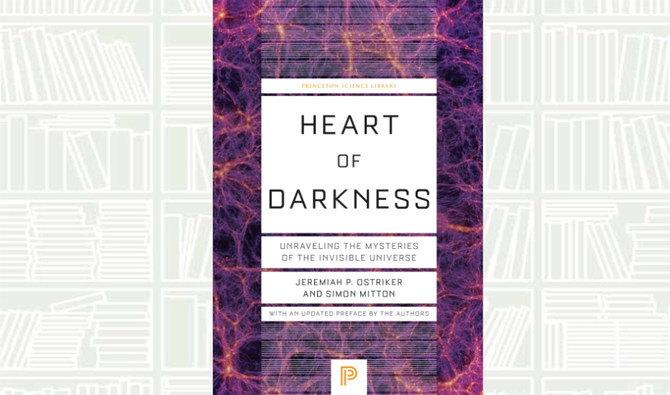
- The story of how evidence for the so-called “Lambda-Cold Dark Matter” model of cosmology has been gathered by generations of scientists throughout the world is told here by one of the pioneers of the field, Jeremiah Ostriker, and his coauthor Simon Mitton
Authors: Jeramiah P. Ostriker and Simmon Mitton
Heart of Darkness describes the incredible saga of humankind’s quest to unravel the deepest secrets of the universe. Over the past 40 years, scientists have learned that two little-understood components—dark matter and dark energy—comprise most of the known cosmos, explain the growth of all cosmic structure, and hold the key to the universe’s fate.
The story of how evidence for the so-called “Lambda-Cold Dark Matter” model of cosmology has been gathered by generations of scientists throughout the world is told here by one of the pioneers of the field, Jeremiah Ostriker, and his coauthor Simon Mitton.
From humankind’s early attempts to comprehend Earth’s place in the solar system, to astronomers’ exploration of the Milky Way galaxy and the realm of the nebulae beyond, to the detection of the primordial fluctuations of energy from which all subsequent structure developed, this book explains the physics and the history of how the current model of our universe arose and has passed every test hurled at it by the skeptics.
This monumental puzzle is far from complete, however, as scientists confront the mysteries of the ultimate causes of cosmic structure formation and the real nature and origin of dark matter and dark energy.
What We Are Reading Today: ‘A Natural History of Shells’ by Geerat Vermeij

Geerat Vermeij wrote this “celebration of shells” to share his enthusiasm for these supremely elegant creations and what they can teach us about nature.
Most popular books on shells emphasize the identification of species, but Vermeij uses shells as a way to explore major ideas in biology.
How are shells built? How do they work? And how did they evolve?
With lucidity and charm, the MacArthur-winning evolutionary biologist reveals how shells give us insights into the lives of animals today and in the distant geological past.
What We Are Reading Today: The Princeton Field Guide to Dinosaurs

Author: Gregory S. Paul
The bestselling “Princeton Field Guide to Dinosaurs” remains the must-have book for anyone who loves dinosaurs, from amateur enthusiasts to professional paleontologists. Now extensively revised and expanded, this dazzlingly illustrated large-format edition features nearly 100 new dinosaur species and hundreds of new and updated illustrations, bringing readers up to the minute on the latest discoveries and research that are radically transforming what we know about dinosaurs and their world.
What We Are Reading Today: The Virtue Proposition by Sig Berg
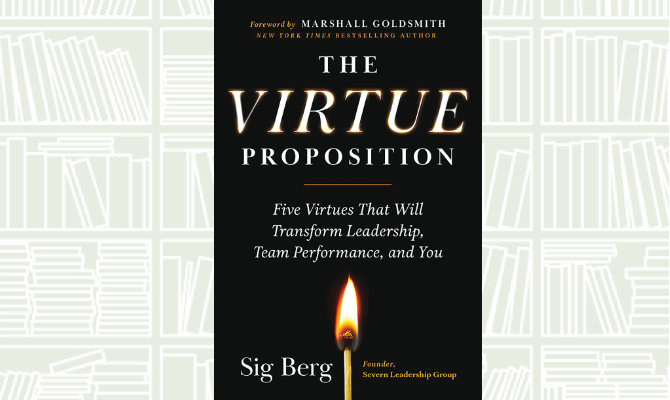
Sig Berg, founder of the Severn Leadership Group, explains what’s missing from traditional leadership, with its emphasis on the rules and rituals of boardrooms and C-suites, and from iconoclastic leadership, which urges you to move fast and break things.
Neither of these embrace virtues, and neither has, nor ever will, deliver consistent superior results.
There is a courageous third way: virtuous leadership.
This book speaks to men and women who witness the absence of virtues and know they can do better, says a review published on goodreads.com.
What We Are Reading Today: ‘Stellar English’
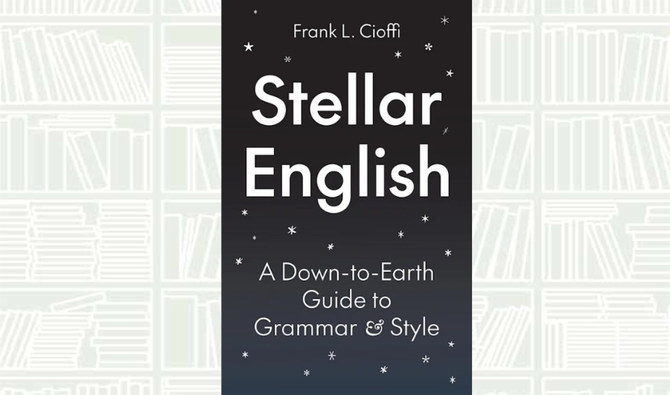
Author: FRANK L. CIOFFI
“Stellar English” lays out the fundamentals of effective writing, from word choice and punctuation to parts of speech and common errors.
Frank Cioffi emphasizes how formal written English—though only a sub-dialect of the language—enables writers to reach a wide and heterogenous audience.
Cioffi’s many example sentences illustrating grammatical principles tilt in an otherworldly direction, making up a science fiction story involving alien invasion.






